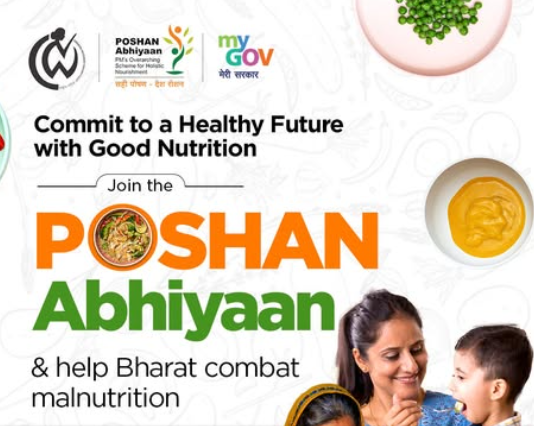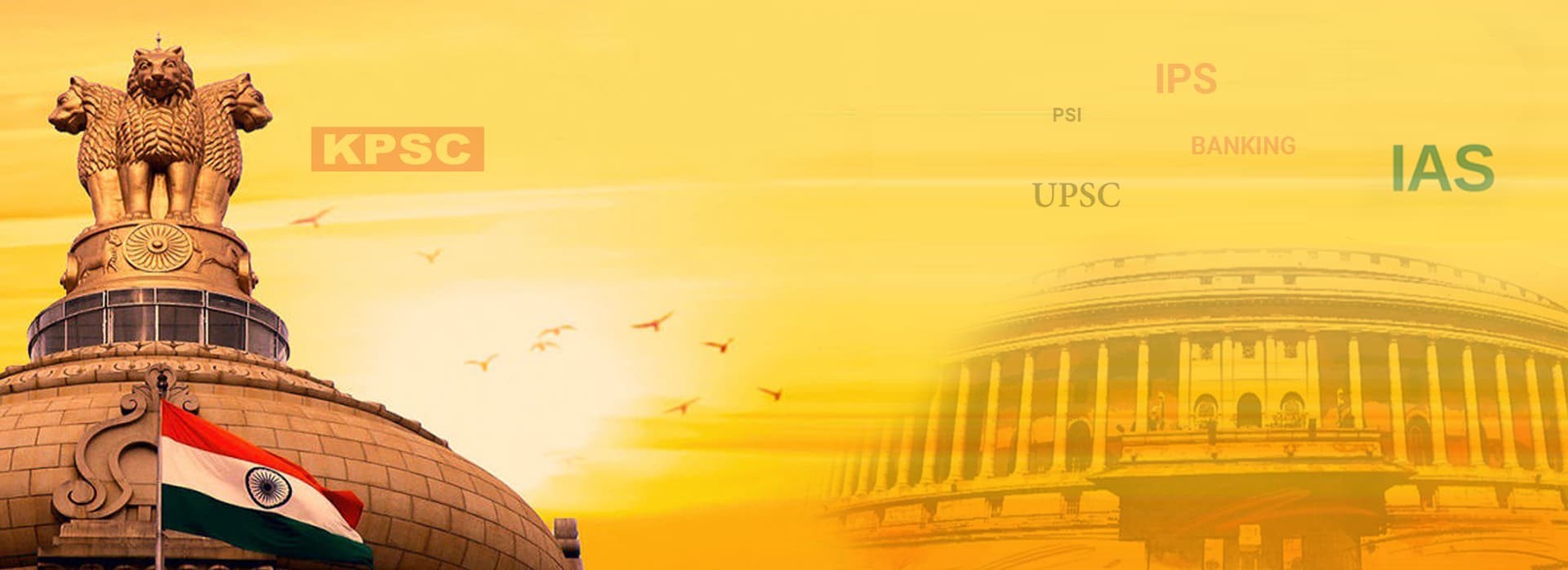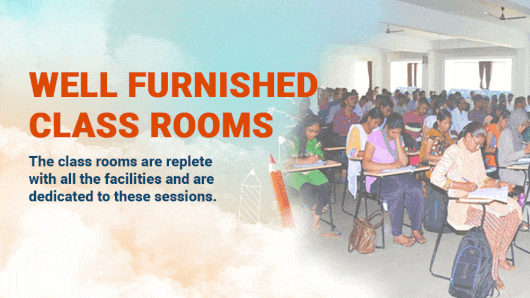Fighting Malnutrition Through Empowerment
Syllabus
GS 2: Health
Why in the News?
Despite major food schemes and POSHAN Abhiyaan, India’s malnutrition rates remain high among women due to lack of empowerment, financial independence, and deeply rooted gender-based social inequalities.

Introduction
- India’s fight against malnutrition remains a challenge, particularly for women and girls, despite the implementation of various nutrition programs in India.
- Despite economic growth and large-scale schemes like POSHAN Abhiyaan (Prime Minister’s Overarching Scheme for Holistic Nutrition), also known as the National POSHAN Mission, gendered nutritional gaps persist. The POSHAN Abhiyaan full form (पोषण अभियान) reflects its comprehensive approach to addressing malnutrition. In Tamil, it is known as பேஷன் அபியான்.
- Cultural norms, economic dependence, and policy gaps contribute to poor outcomes.
- Addressing women’s empowerment is essential to truly eliminating malnutrition across the country.
Reality of Malnutrition in India
- India has launched free foodgrain programmes for nearly 800 million people as part of its nutrition programs in India.
- Despite this massive food security net, hunger and malnutrition remain major concerns.
- Women and girls are the most neglected in the battle against malnutrition, particularly pregnant women and lactating mothers and adolescent girls.
- Even with progress in GDP and infrastructure, nutritional inequality continues, especially for women.
POSHAN Abhiyaan: A Vision for a Nourished India
- Launched in 2018, the POSHAN Abhiyaan, also known as the National Nutrition Mission or mission poshan, aimed to make India malnutrition-free by 2022. The POSHAN Abhiyaan launch date marked a significant milestone in India’s fight against malnutrition.
- The focus groups of the scheme include:
- Pregnant women and lactating mothers Adolescent girls
- Young children
- Despite this focus, gaps persist, particularly in women’s nutrition outcomes.
- The POSHAN Abhiyaan ministry, which is the Ministry of Women and Child Development, oversees the implementation of this crucial initiative.
- POSHAN Abhiyaan benefits include improved nutrition awareness, supplementary nutrition, and health services for target groups.
- The initiative also includes events like పోషన్ పఖ్వాడా (Poshan Pakhwada in Telugu) to promote nutrition awareness at the community level.
Data Paints a Bleak Picture
- The National Family Health Survey (NFHS)-5 shows alarming figures:
- 57% of women aged 15-49 are anemic. In comparison, only 26% of men are anaemic.
- Nearly 1 in 5 women is underweight.
- These statistics indicate that Indian women are more prone to malnutrition than men.
- This discrepancy reflects structural problems in nutrition and welfare systems, highlighting the need for improved monitoring of POSHAN Abhiyaan.
- The data also reveals high rates of stunting, undernutrition, and low birth weight among children 0-6 years, emphasizing the need for interventions during the first 1000 days of a child’s life, particularly for pregnant women and adolescent girls.
POSHAN 2.0 and Budgetary Allocations
- The government merged several nutrition schemes into POSHAN 2.0 to increase efficiency.
- In 2022–23, the Ministry of Women and Child Development received around ₹24,000 crore for Saksham Anganwadi and Poshan 2.0.
- However, only 69% of this budget had been used by December 2022.
- Surprisingly, despite higher spending:
- Anemia among women increased from 53% to 57% between the last two NFHS rounds.
- About 18.7% of women remain underweight.
- These trends suggest that financial investment alone cannot solve the malnutrition crisis, emphasizing the need for a more comprehensive approach to POSHAN Abhiyaan objectives.
- The implementation of the poshan tracker and initiatives like poshan pakhwada aim to improve monitoring and community engagement in nutrition programs.
Cultural Norms: The Root Cause of Nutritional Inequality
- In many Indian households, especially those that are economically poor:
- Women and girls are the last to eat.
- Their nutritional needs are often ignored when food is limited.
- This points to a deeper issue: malnutrition is not just a health or food issue; it is a social justice issue.
- Patriarchal norms further deepen this crisis by making women:
- Dependent on male family members for food choices.
- Lacking control over resources, including food and income.
- Addressing these cultural norms requires a Jan Andolan (people’s movement) approach, focusing on nutrition awareness and behavioral change at the community level.
Financial Dependence–Nutrition Link
- NFHS-5 found that 49% of women have no decision-making power over how their earnings are spent.
- This financial dependence often results in compromised nutrition.
- When a woman lacks control over her own money, she also lacks control over her diet.
- Gender-based deprivation is thus directly linked to nutritional outcomes.
Empowerment as the Missing Link
- Research has consistently shown that empowering women economically leads to better nutrition outcomes.
- Nobel Laureate Esther Duflo’s findings:
- Women who control household income spend more on food and children’s well-being.
- In studies conducted among low-income families in India:
- Women with some financial independence or control over household resources were significantly less likely to be malnourished.
- Empowerment, not just awareness, is essential to break the cycle of hunger and poor nutrition.
- Community engagement plays a crucial role in fostering this empowerment and driving behavioral change.
Employment Puzzle for Indian Women
- Women’s labor force participation improved:
- It rose from 23% in 2017–18 to about 33% in 2021–22.
- While this is encouraging on paper, deeper problems exist.
- Most working women are engaged in:
- Insecure, informal, and low-paying jobs. Only 5% of women have regular salaried employment.
- Around 20% are self-employed, often in informal setups.
- Moreover:
- Self-employed women earn on average 53% less than men in similar roles.
- Low earnings mean limited ability to spend on better food and health.
Job Security Matters
- Just involving women in the workforce is not enough.
- What matters is the nature and quality of their employment:
- Do they earn enough? Do they receive fair pay?
- Do they have workplace safety and benefits?
- Without these, women remain financially vulnerable even when employed.
- This vulnerability directly affects their access to nutritious food.
Why POSHAN Abhiyaan Alone Is Not Enough
- Despite efforts to promote awareness around nutrition, POSHAN Abhiyaan has limited impact in its current form.
- Reasons include:
- Cultural barriers to food access for women.Lack of economic empowerment.
- Disconnect between health, nutrition, and livelihood policies.
- Merely increasing awareness does not help if women still cannot afford or access nutritious food.
Towards a Convergent Approach
- To make a real impact, POSHAN 2.0 must integrate with broader women’s welfare schemes.
- Key steps include:
1.Set Measurable Targets
- Go beyond nutrition goals like reducing anemia or stunting.
- Set clear targets for increasing women’s income and autonomy.
2.Break Departmental Silos
- Go beyond nutrition goals like reducing anaemia or stunting.
- Set clear targets for increasing women’s income and autonomy.
3.Utilise Anganwadis as Empowerment Hubs
- Anganwadi centers should not only provide food and health services.
They should offer:
Skill training
Financial literacy workshops
Links to credit and employment opportunities
These centres can become one-stop hubs for holistic women’s development. - They should offer:
- Skill training Financial literacy workshops
- Links to credit and employment opportunities
- These center’s can become one-stop hubs for holistic women’s development.
Women as Drivers of Change
- A nutrition programme’s success hinges on seeing women not just as recipients, but as active participants.
- When women are empowered:
- They prioritize their own health and their children’s well-being.
- They uplift entire families and communities.
- Women must be placed at the center of the fight against malnutrition, as decision-makers, earners, and leaders.
Conclusion
A malnutrition-free India demands more than schemes; it needs empowered women. Financial independence, job security, and social equality are crucial to ensuring women can access, afford, and benefit from nutrition initiatives. The POSHAN Abhiyaan (पोषण अभियान) and other nutrition programs in India must evolve to address these underlying issues, focusing on women’s empowerment and cross-sectoral convergence to truly combat malnutrition and promote early childhood development. By integrating Jan Andolan principles and leveraging tools like the poshan tracker, India can make significant strides towards achieving its nutritional goals. For more information on these initiatives, visit the official website at poshanabhiyan.gov.in.
Source:The Hindu
Mains Practice Question
Discuss how converging nutrition schemes with women empowerment initiatives can help India eliminate malnutrition. Suggest institutional reforms to improve outcomes





